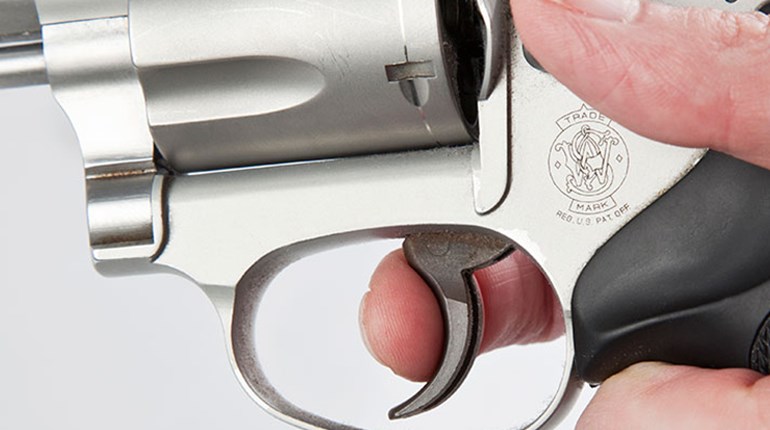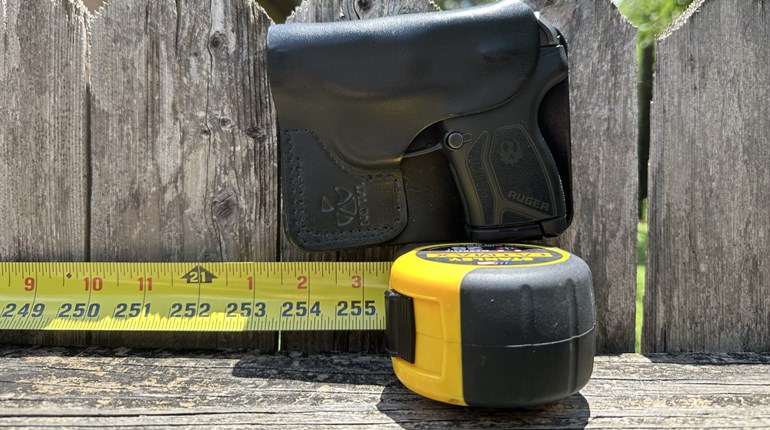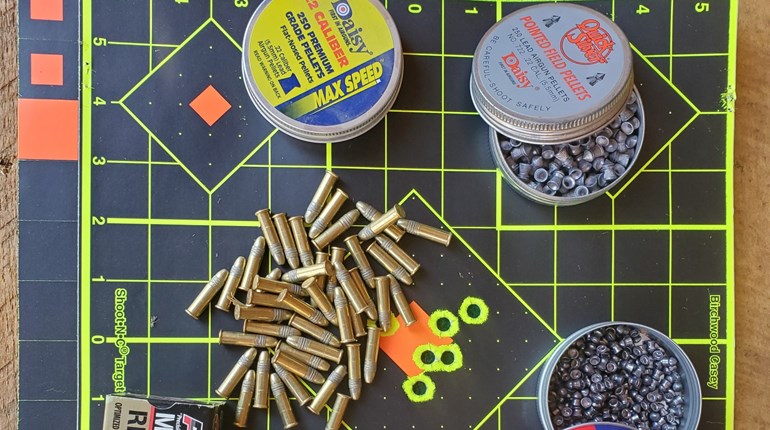
The Problem
You are a bullseye-pistol competitor poised to break into the NRA Expert Class, but the other day your target looked like you had shot it with a few rounds of buckshot. Hits formed more of a wide pattern than a tight group. Your friend suggested turning the target around and shooting the back side with no bullseye showing. You gave it a try and fired 10 shots, centering the sights on the blank target. When you measured the group afterward, none of the hits would have been outside the 9-ring. You’ve never shot that well during a slow-fire string, and no matter how hard you try, you can’t duplicate the performance on a bullseye.
The Solution
Let’s look at the situation from three angles. This is primarily a visual problem, but there is an emotional aspect at play and some kinesthetic influence as well. Understanding what is taking place when you deliver a shot—and how to correct the deficiencies—will enable you to shoot either side of the target with equal accuracy.
Considering your level of experience, I suspect you know that looking at the front sight through the rear-sight notch is essential to delivering a good shot. The problem you describe suggests you are starting with your eye focused on the front sight and the pistol appears stable on the target, but then things fall apart. All is well until you apply pressure to the trigger, when the apparent movement of the gun increases to the point that your trigger finger slows or stops moving altogether. Now it looks as if the sights are barely on the target, much less the center of the bullseye. About to run out of air, you increase pressure on the grip in an effort to stabilize the pistol. Before things can get any worse, you release the shot. Sound familiar?
Your eye leaving the front sight and settling on the target while you press the trigger causes the perception of increased gun movement. You shift your focus because you want to verify the sights are on the X-ring and your desire to see the fruit of your efforts as the bullet punches a hole in the paper. Focusing on the target, however, is only acceptable after the shot has been fired.
The emotional aspect comes from seeing a good sight picture deteriorate before you can deliver the shot. You become impatient, disgusted and disappointed with your poor performance. Your mind screams at you to shoot before the apparent movement makes it impossible to hit the center of the target.
Kinesthetics compound the problem as you squeeze the pistol tighter and tighter in an effort to keep it from wandering all over the target. This makes the index finger more difficult to move independently from the rest of the hand to release the shot. Frustrated with the gun movement and a discharge that seems to be taking too long, you suddenly fire just to get the experience over with. In almost every case, the results are disappointing.
You get better results with a blank target because you have nothing specific to aim at, just the center of a shape. We can point at the center of any object with a high degree of accuracy through our natural hand-eye coordination. A shooter of your capabilities can hold a pistol within 10 MOA without difficulty, which equates to approximately 5 inches at 50 yards. This is within the 5.5-inch 9-ring of a slow-fire target, which you have already proven you can hit without the distraction of trying to hold on a black bullseye.
When shooting the blank target, your visual attention remains totally on the sights throughout the aiming and firing process. There is no perception of increasing gun movement as you manipulate the trigger, and there is no reason for negative emotions to develop. Since the pistol appears stable, you don’t feel the need to increase grip tension, and your index finger progresses smoothly through the trigger stroke without adding unwanted movement to the gun.
You’ve shown that you have the necessary skills to hit the 9-ring or better with every shot. Now, it’s a matter of keeping your focus on the sights when shooting at a bullseye and trusting those skills to produce good hits.
Keep Your Focus
Here’s a simple test to determine if your eyes are on the sights rather than on the target when the gun fires. If you see brass exit the ejection port and smoke, flash or gases exiting the muzzle, you’re focused on the gun. These things happen every time you pull the trigger, but you’ll rarely see them if your eyes are locked on the target.





































